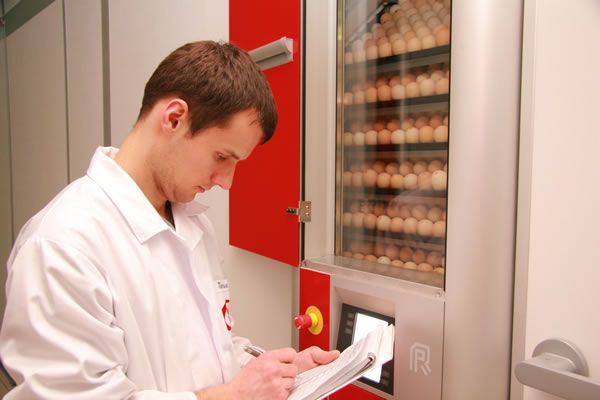Optimizing poultry production from egg to chicken
Tags: Hatchery management | Whitepaper
, August 27 2010

Hatching egg quality and incubation conditions influence broiler performance. It is therefore important to continually optimize every stage of incubation management, based on specific protocols for quality control and best performance.
In addition to data collection and data analysis, open, regular communication between breeder farm, hatchery and broiler farm is essential, both for quality control and to produce first-class results in integrated poultry meat production. The hatchery is a natural hub for communications between separate production links, because hatchery management receives production data both from the breeder farm and the broiler farm.
The basis for optimization is found (1) in quantifiable criteria and (2) in references or standards for each of these criteria (see table).
Reference data may be based on general standards provided by incubation consultants or breeder companies. Highly practical references are usually provided by the hatchery itself. Hatchery managers generally collect data on egg quality, fertility, hatchability and first-week mortality per batch of eggs - and from this data, hatchery specific standard curves can be produced.
Optimization protocols are then directed to perform above the hatchery specific standards. A disadvantage of hatchery specific standard curves is that structural failures and mismanagement may be hidden and not found. For this reason, it is still advisable to compare hatchery specific data with more general reference data from consultants or companies periodically.
Advice
- Record key data on specific forms designed for this purpose;
- Record information on medication at breeder farm and hatchery, including vaccination;
- Define hatchery standards with reference to egg quality, hatchability, chick quality and first-week mortality;
- Compare data from each batch with the hatchery’s own reference data;
- Regularly compare hatchery specific data with more general reference, for example from consultants or breeder companies.
- Take appropriate action if quantifiable data falls below reference data.
- Investigate for structural failures if hatchery specific standards deviate below the standard curves provided by consultants or breeder companies.
- Always evaluate the results of any measures taken to improve or alter standards.
| Step in incubation | Quantifiable criteria: |
| Egg handling at the farm and during transport |
|
| Egg storage |
|
| Preparation for incubation: egg traying, prewarming, preheating |
|
| Incubation in the setter |
|
| Transfer to hatchers |
|
| Incubation in the hatchers |
|
| Chick collection |
|
| After chick transport and first week at the farm |
|
| Medication |
|